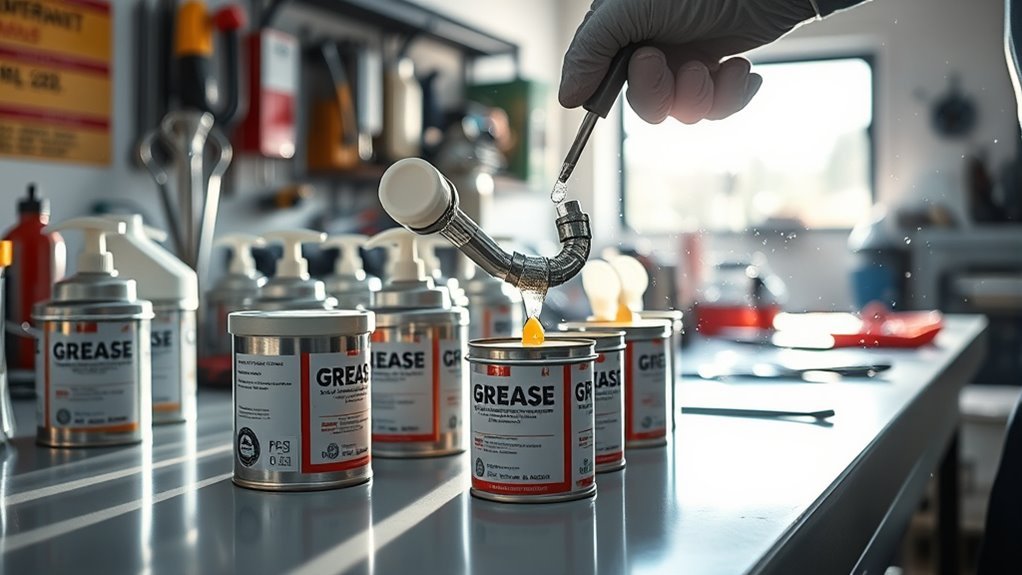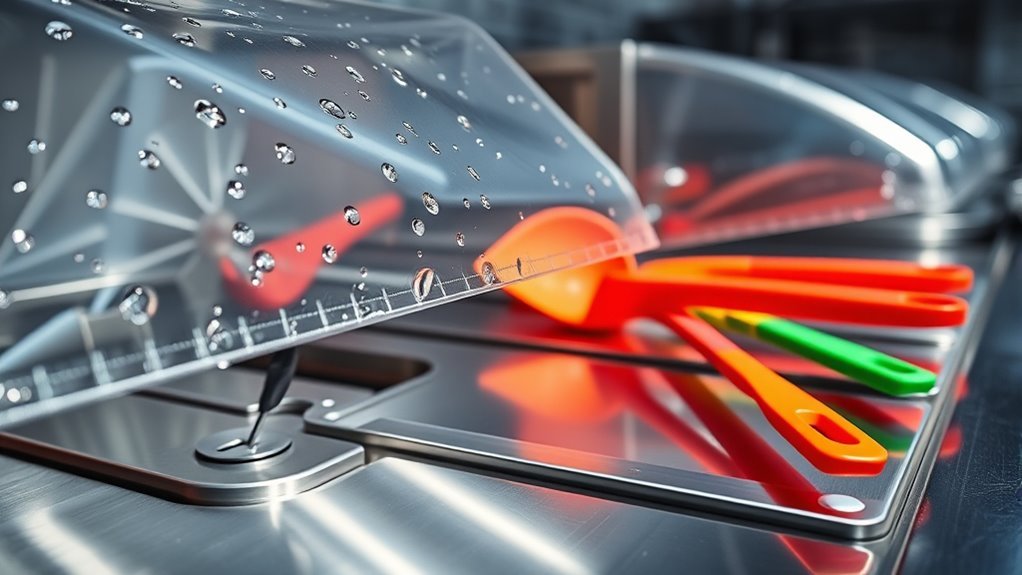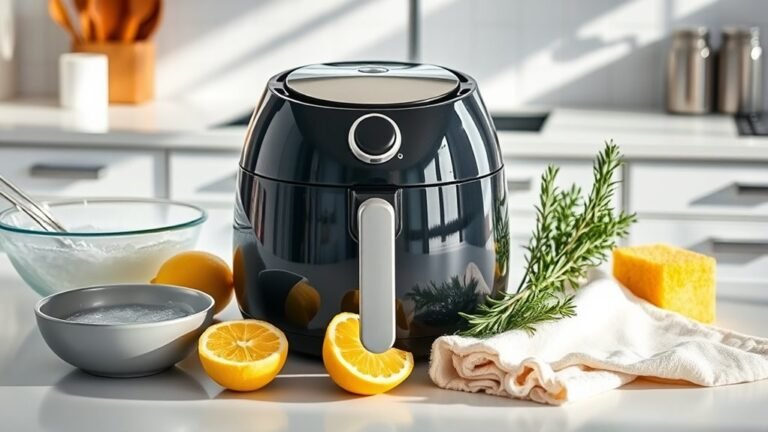Preventing Dirt Buildup on Grease
You can prevent dirt buildup on grease by choosing the right type that suits your specific conditions and applying it carefully with clean tools to avoid contamination. Don’t over-apply, as excess grease attracts more dirt. Regularly clean old grease and inspect parts to keep things running smoothly. Using quality protective covers and seals also helps block dust and debris. Keep these practices in mind, and you’ll find simple ways to keep grease cleaner and equipment lasting longer.
Understanding the Causes of Dirt Accumulation on Grease

Although grease is essential for reducing friction and wear, it can easily attract dirt and debris. You need to understand dirt sources to keep your machinery running smoothly and freely. Dirt can come from the environment—dust, sand, or other particles floating around. It can also come from worn parts shedding tiny metal fragments or contamination during handling. Grease properties play a big role here; its sticky and viscous nature helps it cling to surfaces but also makes it a magnet for dirt. If you want to maintain freedom from constant breakdowns, recognizing how these factors interact is key. By understanding what draws dirt to grease, you can take steps to minimize buildup and keep your equipment operating at peak performance.
Choosing the Right Type of Grease for Your Application
When selecting grease for your machinery, you’ll want to contemplate the specific conditions it will face, such as temperature, load, and exposure to contaminants. Different application environments demand grease with particular properties—some handle extreme heat, while others resist water or heavy pressure. By understanding these grease properties, you can pick a formula that stays put, minimizing dirt buildup and extending equipment life. Don’t settle for a one-size-fits-all approach; instead, choose grease designed for your unique environment. This way, you keep your machinery running smoothly without the hassle of constant cleaning or repairs. Selecting the right grease isn’t just about lubrication—it’s about freedom from unexpected downtime and maintenance headaches.
Proper Application Techniques to Minimize Contamination

Choosing the right grease only gets you part of the way to preventing dirt buildup. How you apply it plays a huge role too. You want to adopt application methods that reduce contamination sources like dust, moisture, and debris. Always use clean tools and avoid touching grease with dirty hands or equipment. Apply grease in a controlled environment to minimize exposure to airborne particles. Don’t over-apply; excess grease can attract more dirt and cause buildup faster. Focus on precise, targeted application to the moving parts that need lubrication. By mastering proper application techniques, you keep contaminants out and maintain the grease’s effectiveness, giving you the freedom to trust your equipment runs smoothly without unnecessary grime slowing you down.
Regular Cleaning and Maintenance Practices
To keep grease free from dirt buildup, you need to commit to regular cleaning and maintenance. Setting clear cleaning schedules and maintenance routines guarantees you stay ahead of contamination, giving you the freedom to focus on what matters. Consistency is key—neglecting these tasks invites dirt, reducing efficiency and causing wear.
| Task | Frequency |
|---|---|
| Inspect grease areas | Weekly |
| Remove old grease | Monthly |
| Clean surrounding parts | Bi-weekly |
| Reapply fresh grease | After cleaning |
Using Protective Covers and Seals to Keep Dirt Out

A well-fitted protective cover or seal can make all the difference in keeping dirt out of your grease. When you choose protective materials, look for ones that are durable and resistant to environmental wear, ensuring long-lasting defense against contaminants. Seal designs play an essential role too; they should snugly fit around components to block dust, debris, and moisture. By selecting advanced seal designs like labyrinth or lip seals, you enhance protection without restricting movement. This approach not only preserves the purity of your grease but also gives you the freedom to operate confidently, knowing your equipment stays cleaner longer. Investing in quality covers and seals means less maintenance hassle and more time focused on what matters most—your work and freedom.
Frequently Asked Questions
Can Additives Help Grease Resist Dirt Buildup?
Imagine you’re a knight in shining armor, but instead of a sword, you wield grease with powerful additives. You’ll find that additive efficiency plays an essential role in enhancing grease formulation to resist dirt buildup. By choosing the right additives, you can keep your machinery running clean and free, breaking the chains of grime and wear. So yes, additives can definitely help your grease fight off dirt and keep things smooth.
How Does Temperature Affect Grease Contamination?
Temperature fluctuations can really impact grease contamination by changing its viscosity. When the temperature rises, grease tends to thin out, making it easier for dirt and contaminants to mix in. On the flip side, cold temperatures thicken grease, which might trap particles and cause buildup. You’ll want to keep an eye on these changes since maintaining consistent grease viscosity helps you avoid unwanted contamination and keeps your equipment running freely.
What Are the Signs of Dirt-Contaminated Grease?
Ever noticed gritty particles messing with your smooth ride? When dirt contaminates grease, you’ll see changes in grease composition—like a gritty texture or discoloration. Contamination sources such as dust or debris sneak in, making the grease less effective. You might also hear unusual noises or feel increased friction. Don’t let this sludge trap you; spotting these signs early helps you keep your machines running free and smooth.
Can Dirt Buildup in Grease Cause Machinery Failure?
Yes, dirt buildup in grease can definitely cause machinery failure. When contaminants mix with grease, they create abrasive particles that wear down moving parts faster. If you want your equipment running smoothly and avoid costly downtime, prioritize grease maintenance and dirt prevention. Keeping grease clean not only extends your machinery’s life but also gives you the freedom to focus on what matters without unexpected breakdowns holding you back.
Are Synthetic Greases Less Prone to Dirt Accumulation?
Did you know synthetic greases can improve grease performance by up to 30% compared to conventional options? If you’re wondering whether synthetic greases are less prone to dirt accumulation, the answer is yes—they offer synthetic benefits like better resistance to contaminants and longer-lasting protection. This means you get more freedom from frequent maintenance and downtime, keeping your machinery running smoothly with less hassle and greater efficiency.






